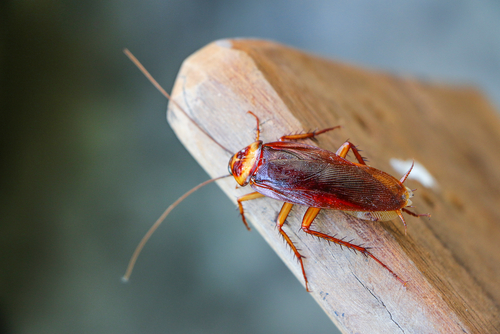A winter with warmer temperatures than normal could mean more pests like ticks and mosquitos, especially in 10 major U.S. cities, according to the bi-annual Vector Sectors list from the National Pest Management Association (NPMA).

“People aren’t the only ones enjoying the warmer-than-average winter season this year,” said Dr. Jim Fredericks, SVP of public affairs for the NPMA. “These warm and wet conditions create the perfect recipe for pests like ticks, mosquitoes, and cockroaches to get an early start to their peak season. Despite being a nuisance, these pests are capable of transmitting diseases to humans and pose significant threats to our health and well-being.”
What Can Facilities Professionals Do About It?
Facilities managers should consider sealing cracks and holes outside their buildings and practice keeping food in airtight containers. Keep in mind that mice and rats can squeeze through facility openings as small as the size of a dime and a quarter, respectively. Facilities managers are encouraged to dispose of garbage regularly. Those who are not licensed pest control professionals are urged to call in the specialists if they believe there is a major pest infestation in their facilities.
Facilities managers who work mostly outside, such as those at local, state, and federal parks, should use bug repellent with at least 20% DEET, refrain from wearing perfumes, and wear light-colored clothing to make it easier to spot ticks. They should check clothing for ticks and remove them promptly.
Here are the Top 10 cities, in alphabetical order, on the NPMA’s Vector Sectors list:
1. Boston, MA – Rodent populations are already high in Beantown due to a warmer-than-normal start to the winter, and these rodents are expected to go indoors during the remaining part of the winter.
2. Detroit, MI – It is expected that ticks will be out in full force in Motor City when the temperature exceeds 50 degrees F or more thanks to mild weather in January and February.
3. Grand Rapids, MI – A cold start to winter in River City led to rodents heading indoors where they will remain until spring.
4. Harrisburg, PA – Tick populations remained stable in Pennsylvania’s Capital City thanks to warmer-than-normal temperatures throughout the winter. This will mean more tick activity as the weather warms this spring.
5. Indianapolis, IN – Larger populations of ticks at the Racing Capital of the World are the result of a mild winter, and they are expected to survive into spring. This is expected to lead to high tick activity on warm late winter and early spring days.
6. Minneapolis, MN – A mild February in The Mill City gives tick populations a jumpstart to spring after cold temperatures drove them indoors.
7. Miami, FL – A warm and wet winter is expected to increase the number of cockroaches and mosquitos this spring in Magic City.
8. New York, NY – The Big Apple is expected to have more ticks which are expected to be active on warm days in the late winter and early spring thanks to a milder-than-usual winter.
9. Pittsburgh – Lower-than-normal snowfall totals in Iron City, combined with mild winter weather, will lead to more ticks on mild winter and spring days.
10. Salt Lake City – Cooler-than-normal weather in Utah’s capital city led rodents to head indoors where they are expected to stay even though January and February brought warmer temperatures.
Cold Temperatures Also Brought in Rodents
Fredericks additionally noted that “while a majority of the country observed mild temperatures, a fair share of the U.S. did encounter significant snowfall and dry spells as well as below-average temperatures, securing their spot on our watchlist.”
“Dipping temperatures tend to drive rodents indoors, where they’ll find food and shelter to keep them busy until the spring weather rolls in,” Fredericks said.
